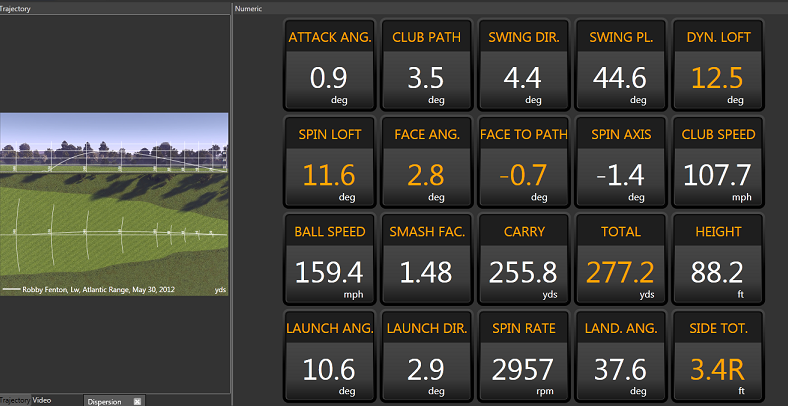TrackMan: Definitive Answers at Impact and Beyond
/Here is some interesting, albeit older, data mined by TrackMan from the PGA and LPGA Tours….
(Please note that these are all averages)
PGA Tour - Each club in the bag hits the ball the same average height– 30 yards.
LPGA Tour - Each club in the bag hits the ball the same average height – 25 yards.
My take away here is that slower club speeds will typically always hit the ball at lower peak heights than players with higher club speeds. My findings using TrackMan over the years have also shown me that slower player typically need to deliver more loft at impact, they need less shaft lean and they need to hit down less than their higher speed counterparts.
In conditions that eliminated any roll, an average PGA Tour player would hit a driver and a 5-wood 500 yards; a driver and a 7- iron 441 yards; and a driver and a PW 405 yards.
In conditions that eliminated any roll, an average LPGA Tour player would hit a driver and a 5-wood 405 yards; a driver and a 7- iron 361 yards; and a driver and a PW 327 yards.
I’m not sure about you, but those are some hefty differences. Far too many courses I play have the ladies tees way too far back! I find that in general, both men and women play golf courses that are too long for them. An interesting exercise is to multiply the distance you CARRY a 5 iron by 36 - that’s the maximum length golf course you should be playing.
The carry distance gaps between irons for PGA Tour players are typically greater from club to club than they are for LPGA Tour players.
This indicates that higher speed golfers have an easier time spotting a distance difference between each club. It’s amazing how many ladies say they hit all their irons the same distance! You don’t, it’s just quite often difficult to determine much of a difference. As overall club speeds get slower the player should ideally carry fewer clubs so as to be able to establish differences between clubs and reduce overlap.
Tony Finau using Trackman at Ping HQ
Some useful General information:
Shot direction is primarily determined by a combination of face angle, club path and impact location.
The ball launches primarily in the direction of the club face - approximately 75-85% on full shots.
For putting, shot accuracy is determined primarily by the face angle - the softer the hit (as in chipping and putting) the greater the effect of clubface. In putting the face accounts for 95+% of where the ball goes.
Face angle (largely) determines the launch direction while shot curvature/shape is mostly determined by the club path relative to the face angle. Think of it this way: when a ball is struck with a descending blow, i.e. ball first, ground second, the attack angle is down, yet the ball goes up. The ball goes up due to the angle/loft of the face!
The initial ball direction falls between the club face angle and club path yet it greatly favors the face angle.
The further apart the club face and club path diverge from each other (basically - point in different directions) the more the ball's spin axis tilts and the more curvature exists on the shot.
There isn’t really ever side spin - it is merely back spin on a tilted axis and the more the axis tilts, the more the ball flight curves.
The average male golfer swings a driver somewhere between 82 and 88 mph.
A carry distance of 100 yards for ladies is typically equivalent to a carry distance of 130 yards for men; 200 yards for ladies is equivalent to 250 yards for men.
A par four of 350 yards for ladies is typically equivalent to a par four of 430 yards for the men.
The most important factor in increasing carry distance is clubhead speed. With the driver, for every 1 mph you add to your swing speed you stand to gain around 2.75 yards.
An increase of 1” in the length of a club will typically only increase the clubhead speed by 1 mph.
The quality of the hit is very important as it relays clubhead speed into ball speed. Smash factor is calculated by dividing the ball speed by the clubhead speed. A smash factor of 1.5 is most often only attainable with the driver.
The ball spends 1/2000th of a second on the clubface. That means it would take a scratch handicap golfer almost 28 rounds of even par golf to have the ball be on the clubface for one second!
I have been privileged to have access to TrackMan in my teaching for almost 10 years now. I can unequivocally say that it has helped become a better teacher and coach. Yes, it’s a costly piece of equipment, but one that has paid dividends time and time again for me. There is no possible way I would be where I am today without this little orange box!











